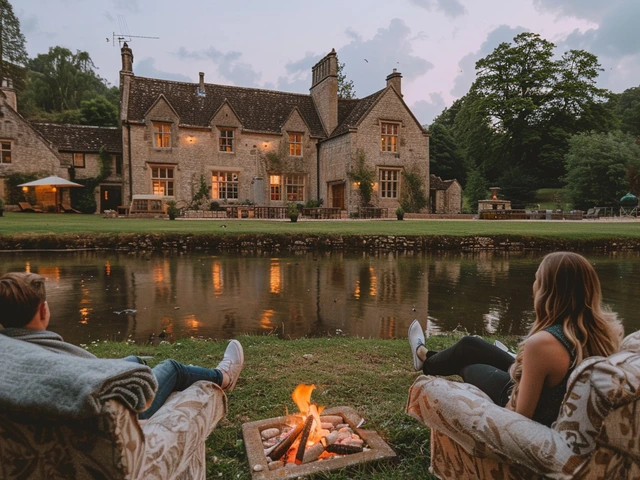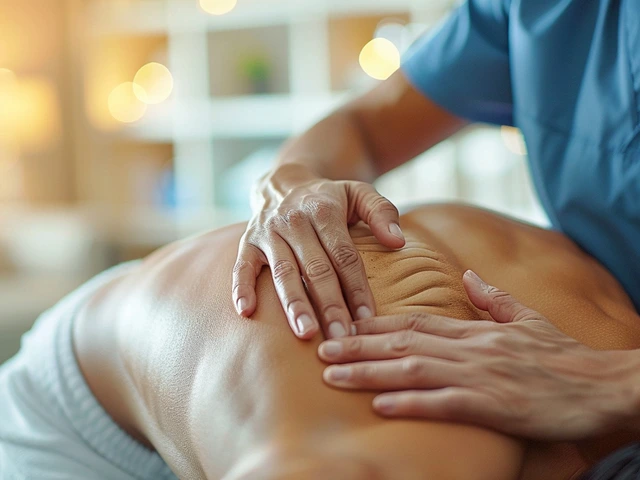Dog Health and Fitness: Simple Massage and Conditioning You Can Do Today
A 5-minute massage after a long walk can speed up your dog's recovery more than you think. Many owners skip hands-on care, but basic massage and targeted conditioning improve mobility, reduce soreness, and help prevent injuries.
Start by watching your dog. If they limp, snap when touched, have a fever, open wounds, or recent surgery, stop and call your vet. When your dog is relaxed, sit beside them and let them sniff your hands. Use light, slow strokes at first—this signals safety.
Quick massage routine (5–10 minutes)
1) Warm-up: With flat palms, glide from shoulders to tail in long strokes for 30–60 seconds. Keep pressure gentle—like petting but slower.
2) Neck and shoulders: Use small circular motions with your fingertips along the base of the skull and top of the shoulders for 30 seconds each side. This eases tightness common in active dogs.
3) Back and hips: Apply gentle kneading (petrissage) along the spine beside the vertebrae—never press directly on the spine. Spend 1–2 minutes, paying attention to areas your dog leans into or avoids.
4) Legs: Gently squeeze and release the muscle belly from top to bottom along the thighs and forearms. Finish with slow stroking toward the paw to encourage circulation. If a limb is painful or swollen, skip it and consult a vet.
5) Range of motion: Move each joint slowly through its natural range—elbow, wrist, hip, knee. Do 3–5 gentle repetitions per joint. This helps maintain flexibility without strain.
Simple conditioning for stronger dogs
Conditioning doesn't need gym gear. Short intervals beat long monotonous walks for fitness. Try 10–15 minutes of brisk walk, then 1–2 minutes of faster pace, repeat 3–5 times. On soft ground or in water, do controlled uphill walks or swimming for low-impact strength work.
Add core work: ask for a sit, then a slow stand without using front paws on furniture; repeat 8–12 times. Use treats or toys as motivation, not bribes. For balance, have your dog place two front paws on a low step and hold for 10–20 seconds, repeat 3 times.
Recovery matters: After intense play or a race, cool down with 5–10 minutes of slow walking, the massage routine above, and a warm compress on tight muscles for 5 minutes. Hydration and a quiet rest area speed healing.
When to call a pro: persistent limping, sudden behavior change, swelling, or pain during home massage. A certified canine massage therapist, veterinary physiotherapist, or your vet can assess underlying issues and build a rehab plan.
Start small. Two short massage sessions a week plus one conditioning session will quickly show better mobility and less stiffness. Keep notes—what helps and what doesn't—so you and your vet can fine-tune your dog's fitness plan.

How Sports Massage Boosts Athletic Performance and Recovery
Sports massage isn't just for pros-it boosts recovery, reduces soreness, and improves movement for anyone who trains hard. Learn how targeted massage enhances performance and prevents injury.

Unlocking Peak Performance with Sports Massage Techniques
Sports massage is an increasingly popular practice among athletes looking to enhance their performance and recovery. It involves tailored techniques that help to increase flexibility, prevent injuries, and reduce recovery time. This article delves into the science behind sports massage, offering insights into its benefits, methods, and tips for integrating it into regular athletic routines. Whether you're a professional athlete or an active enthusiast, understanding these techniques can serve as a secret weapon in achieving athletic goals.

Why More Athletes Are Choosing Rolfing for Better Performance
More athletes are turning to Rolfing for enhanced performance and faster recovery. Through a series of sessions focused on the body's connective tissues, this technique promises to improve flexibility, reduce pain, and optimize alignment. Discover why it's becoming a go-to option for sports professionals looking to gain an edge.

Unlocking Athletic Prowess with Sports Massage: The Ultimate Edge
Discover the hidden benefits of sports massage for athletes. This article delves into the secrets behind muscle therapy and how it can significantly boost athletic performance by improving recovery, flexibility, and mental focus.

Gut Health: The Unsung Hero in the Fight Against Obesity".
Hey there, it's your health-conscious friend again, bringing something really intriguing today! Who knew that our gut health, often overlooked, plays such a star role in the battle against obesity? Join me as we delve into how nurturing our microbiome can aid in effective weight control. Be ready to revolutionize your approach to staying fit and healthy, because proper gut health might just be your secret weapon against extra pounds!

Fascia Stretching: A Practical Approach to Pain Relief
Hello, ladies and gentlemen! Today, we'll delve into the brilliant world of fascia stretching, a practical approach to easing those annoying aches and pains. We'll explore effective stretching techniques, the science behind them, and how they can potentially transform your life. By taking a practical, hands-on approach to this type of physical therapy, we aim to empower you with knowledge and tools to manage your body more effectively. Tune in and let's stretch the pain away together!

The Unseen Benefits of Regular Sports Massage
Heading to the massage table might sound like a treat, but as a keen sportsman, I'm here to show you how it's much, much more than that. I want to take you on a journey to explore the unseen benefits of regular sports massage, throwing an unexpected light on how it royally boosts athletic performance, eases muscle pain, and promotes overall well-being. While it might seem like a time-consuming indulgence to some, the rewards we reap from this simple practice are far-reaching. Trust me, it's worth a read!

Sports Massage: A Key Component in Athletic Success
As an avid sports enthusiast and blogger, I can't stress enough how much sports massage contributes to athletic success. This post will delve into the significance of sports massage in enhancing athletic performance. We’ll touch on its benefits, techniques, and its crucial role in injury prevention and recovery. This is a must-read for every athlete or anyone involved in any strenuous physical activity.



